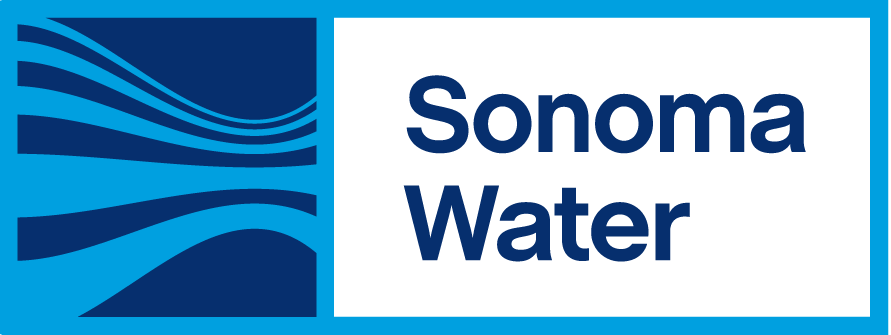Published on March 28, 2024
Chase Takajo’s professional story began in 2013 as he was pursuing his bachelor's degree in geography with a concentration in biophysical environment at Sonoma State University (SSU).
Takajo was working with his faculty advisor to come up with a senior project. He didn’t want to write a report that sat on a shelf and was forgotten. He wanted his work to be meaningful. Fortunately, Takajo’s advisor was familiar with a new and unique collaboration between Sonoma Water and the SSU Center for Environmental Inquiry (CEI). The WATERS Collaborative, which launched in 2012, was a new approach to workforce development – an agency-academic partnership giving students professional skills as they work on local water management challenges.
Takajo and his advisor contacted CEI for help starting a project on the Copeland Creek flood channel, which crosses the SSU campus. CEI helped him identify a water management challenge important to Sonoma Water: massive amounts of sediment washing down on Copeland Creek. Over the course of the school year, CEI put Takajo in touch with Sonoma Water biologists and riparian experts as he mapped the creek, undertook sediment source analysis, and quantified material coming down stream.
At the end of the school year, Takajo presented his findings to Sonoma Water and was offered a position to join the agency as a riparian technician on the stream maintenance team. He’s continued to advance in his career at Sonoma Water ever since.
Takajo’s story is a great example of why Sonoma Water has partnered with the university in this unique and innovative endeavor
“The idea for the WATERS Collaborative was to create relationships with SSU faculty and students, with the goals of increasing awareness of water resource management and conducting important research," said Sonoma Water Assistant General Manager Mike Thompson. “Many of our staff are alumni of SSU, and we wanted to strengthen this pipeline of talent for Sonoma Water and other water management organizations in the region and provide career opportunities for SSU students.”
For Thompson, the bond between Sonoma State and local and regional agencies is critical to pursuing actionable solutions. In addition, Thompson’s commitment to help train future water professionals runs deep: he’s given lectures in classes, partnered on student projects and judged student final posters for the Best Water Poster Award.
SSU’s Center for Environmental Inquiry has made the collaboration possible. “We have one foot in academia and one foot in the environmental community,” said CEI Director Claudia Luke. “We are able to help mobilize faculty and students to address Sonoma Water’s environmental challenges and workforce needs.” The Center helps with project identification, funding, student recruitment, internship programs and cross-year project management.
Over the years, CEI and Sonoma Water saw how their innovative vision was having positive impacts, and they looked for opportunities to grow. In 2020, CEI and Sonoma Water decided to expand WATERS with a new element called “Rising Waters.” The idea was to directly engage students and faculty with water professionals, such as members of the Russian River Watershed Association, to work on emerging water challenges in the region. A new Rising Waters committee was formed to help identify challenges, convene cross-sector workshops, and identify and undertake research needed to find solutions.
The first research challenge was proposed by the Russian River Watershed Association’s board: the challenging nexus of water quality and homelessness. Executive Director Andy Rodgers said the board was struggling with the complexity of this issue and has been fully supportive of working with students to develop solutions.
“Rising Waters has validated that if you have a sensitive subject, a student is going to be much more likely to get authentic responses than a private enterprise or government official might,” Rodgers said. “The information being gathered is unbiased and in an academic setting, so it takes out so much of the potential suspicion or judgment of who might be asking the question versus a student who is there to learn, and people can relate to that.”
The research is already bearing meaningful results. Last year, SSU Geography, Environment & Planning Professor Dr. Jacquelyn Guilford and student researchers discovered high levels of fecal bacteria in Russell Creek in Santa Rosa and documented different types of activities along the creek. Their results garnered a Best Water Poster award at the 2023 SSU Science Symposium and an award from the California Storm Water Quality Association.
“Homelessness is such a complex and multi-dimensional subject,” Rodgers said. “The WATERS Collaborative’s focus on the water quality nexus aspect of the issue does narrow it down, so in that focused context we can evaluate what resources are being applied now, where we have gaps and needs, where there is duplication or overlaps, and where we can become more efficient.”
During the collaboration’s first 10 years, more than 2,700 students in 118 SSU courses engaged in 300+ projects. Thirty faculty members from more than 15 departments worked with more than 20 water organization partners each year. WATERS has yielded actionable research, allowed students to network and engage in real-world activities, and launched students into internships and jobs. “In short, it is the epitome of turning education into action,” Luke said.
As the WATERS Collaborative has grown over the past 10 years, Sonoma Water’s Chase Takajo has reconnected with students, now helping them gain professional experience. As part of a series of field lab classes, the SSU alumnus has had the opportunity to co-teach students how to collect creek sediment cross sections and perform other field work, often in his old stomping grounds along Copeland Creek near the SSU campus.
